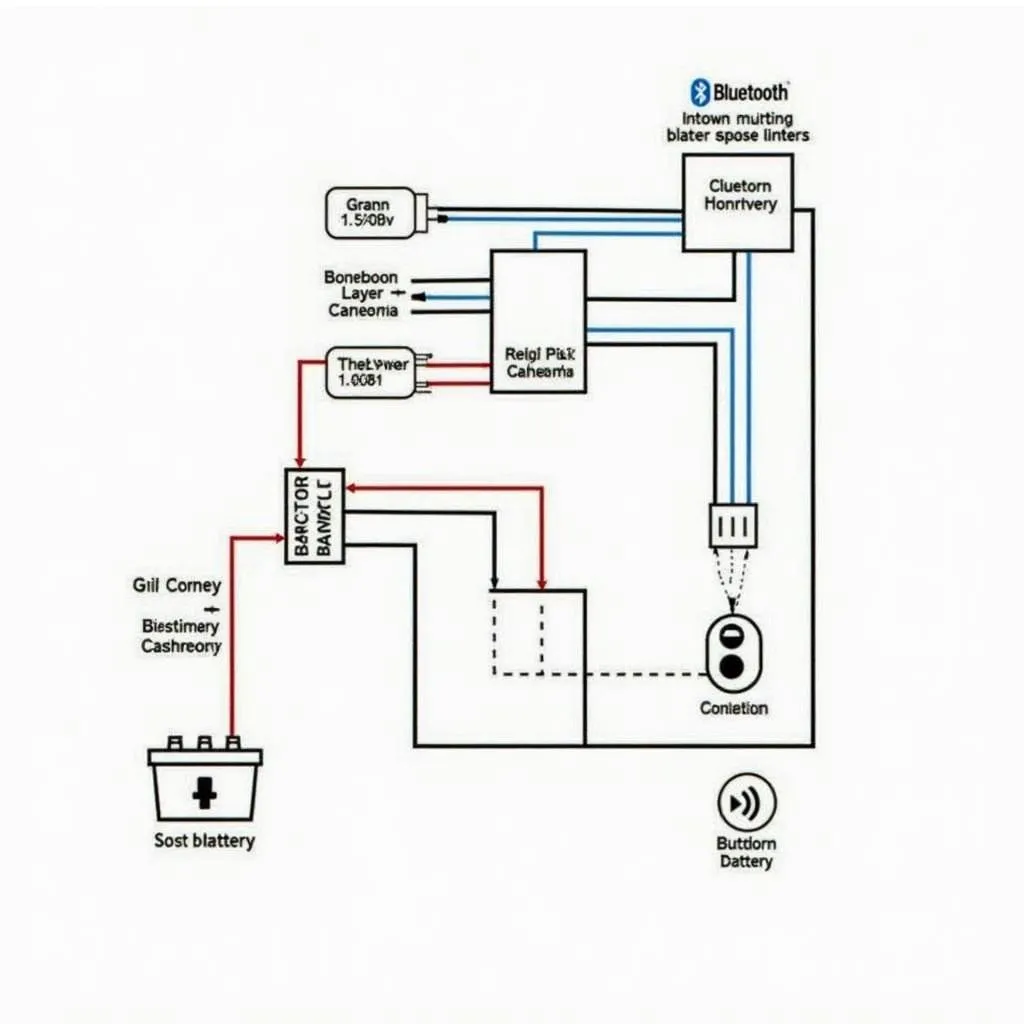The brake warning light on your Mercedes Vito dashboard is a crucial safety feature, designed to alert you of potential braking system issues. Ignoring this warning light could jeopardize your safety and that of your passengers. This comprehensive guide will delve into the common causes of a Mercedes Vito brake warning light and provide practical solutions to get you back on the road safely.
Common Causes of a Mercedes Vito Brake Warning Light
Several factors can trigger the brake warning light on your Vito. Some of the most common causes include:
- Worn Brake Pads: This is the most common culprit behind a lit brake warning light. Mercedes Vito brake pads are equipped with wear sensors that trigger the warning light when the pads thin out, indicating the need for replacement.
- Low Brake Fluid Level: The braking system relies on hydraulic pressure to function correctly. If the brake fluid level drops below a certain point, often due to a leak, it can trigger the warning light.
- Faulty Brake Fluid Sensor: A malfunctioning brake fluid level sensor can send inaccurate signals, causing the warning light to illuminate even when the fluid level is adequate.
- ABS (Anti-lock Braking System) Issues: While less common, problems within the ABS system, such as a faulty wheel speed sensor, can also trigger the brake warning light.
- Brake Master Cylinder Failure: The brake master cylinder plays a vital role in distributing brake fluid pressure. If this component fails, it can lead to a loss of braking power and illuminate the warning light.
Diagnosing the Problem
Identifying the specific cause of the brake warning light requires a systematic approach:
- Check the Brake Fluid Level: Locate the brake fluid reservoir under the hood. If the fluid level is low, there might be a leak in the system.
- Inspect the Brake Pads: Visually examine the brake pads through the wheel spokes. If they appear excessively thin or you notice deep grooves, it’s time for replacement.
- Scan for Error Codes: Using a professional-grade OBD-II scanner, retrieve any stored error codes related to the braking system. These codes can provide valuable insights into the underlying issue.
Solutions and Repairs
The appropriate solution depends on the root cause of the brake warning light:
- Brake Pad Replacement: If the brake pads are worn, replace them immediately with high-quality replacements. It’s recommended to replace both the front and rear pads simultaneously, even if only one set shows signs of wear. For guidance on resetting the brake pad warning light on your Vito, refer to our detailed guide on vito brake pad warning light reset.
- Addressing Brake Fluid Leaks: Any leaks in the brake lines, hoses, or connections must be identified and repaired by a qualified mechanic. Never attempt to drive a vehicle with a brake fluid leak.
- Brake Fluid Flush and Refill: If the brake fluid is contaminated or hasn’t been changed in a while, a complete flush and refill with fresh brake fluid is recommended.
- Replacing Faulty Sensors: Malfunctioning sensors, such as the brake fluid level sensor or ABS wheel speed sensors, should be replaced to ensure accurate readings and prevent false warnings.
- Repairing or Replacing the Brake Master Cylinder: A failing brake master cylinder requires immediate attention. Depending on the severity of the issue, it may be possible to repair the cylinder. However, replacement is often the safest and most reliable solution.
When to Seek Professional Help
While some brake warning light issues can be addressed with basic DIY maintenance, it’s crucial to seek professional assistance in the following situations:
- You’re uncomfortable performing brake system repairs.
- You suspect a serious issue with the ABS system or brake master cylinder.
- The brake warning light remains illuminated despite addressing the common causes.
“Ignoring your Mercedes Vito’s brake warning light is like playing Russian roulette with your safety,” says Jake Carter, a senior automotive technician with over 15 years of experience. “Even a minor issue can quickly escalate into a dangerous situation.”
Conclusion
A glowing brake warning light on your Mercedes Vito should never be ignored. Addressing the underlying issue promptly ensures the safety of you, your passengers, and other road users. By understanding the common causes, employing a systematic diagnostic approach, and seeking professional help when necessary, you can keep your Mercedes Vito running smoothly and safely.
Frequently Asked Questions
Q: Can I drive my Vito with the brake warning light on?
A: It’s strongly discouraged. Driving with a lit brake warning light could put you and others at risk.
Q: How much does it cost to fix a Mercedes Vito brake warning light?
A: The cost varies widely depending on the underlying cause. A simple brake pad replacement might cost a few hundred dollars, while a brake master cylinder replacement could cost significantly more.
Q: Can I reset the brake warning light myself?
A: While resetting the light after addressing the issue is possible, it’s best left to professionals with the right diagnostic tools.
Q: How often should I check my Vito’s brake fluid level?
A: It’s recommended to check the brake fluid level at least once a month and top it up as needed.
Q: How can I prevent future brake warning light issues?
A: Adhering to a regular maintenance schedule, including timely brake pad replacements and brake fluid flushes, can help prevent future problems.

